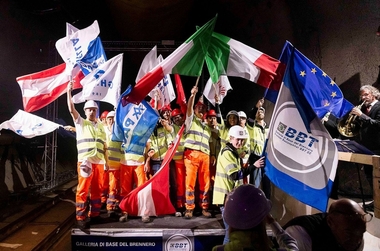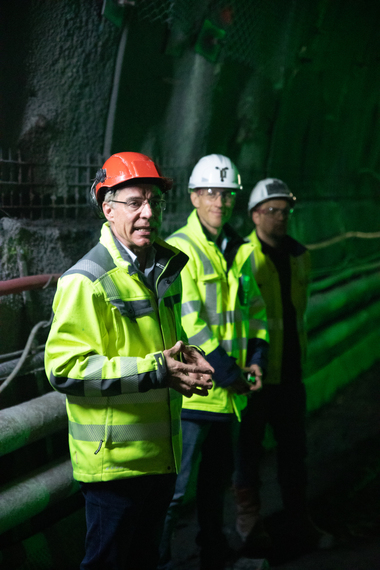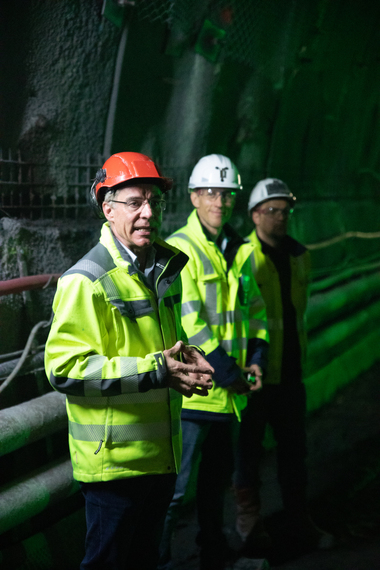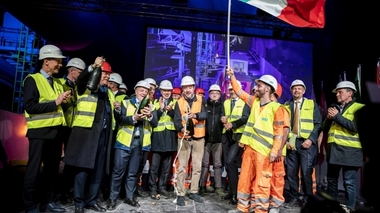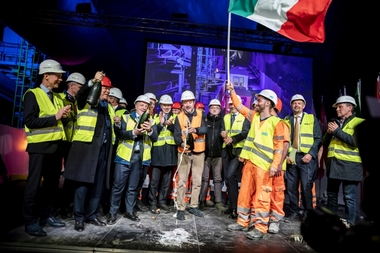Brenner Base Tunnel: TBM Drives of the Main Tunnels in Italy Completed
At the “H61 Mules 2–3” construction lot of the Brenner Base Tunnel, the last of the Italian tunnel boring machines successfully completed the mechanical excavation of the West Main Tunnel on May 2, 2025. The excavation of the two main tunnel tubes has thus been accomplished on the Italian project area. In this construction lot, only a few meters of connecting tunnels still need to be excavated by drill and blast.
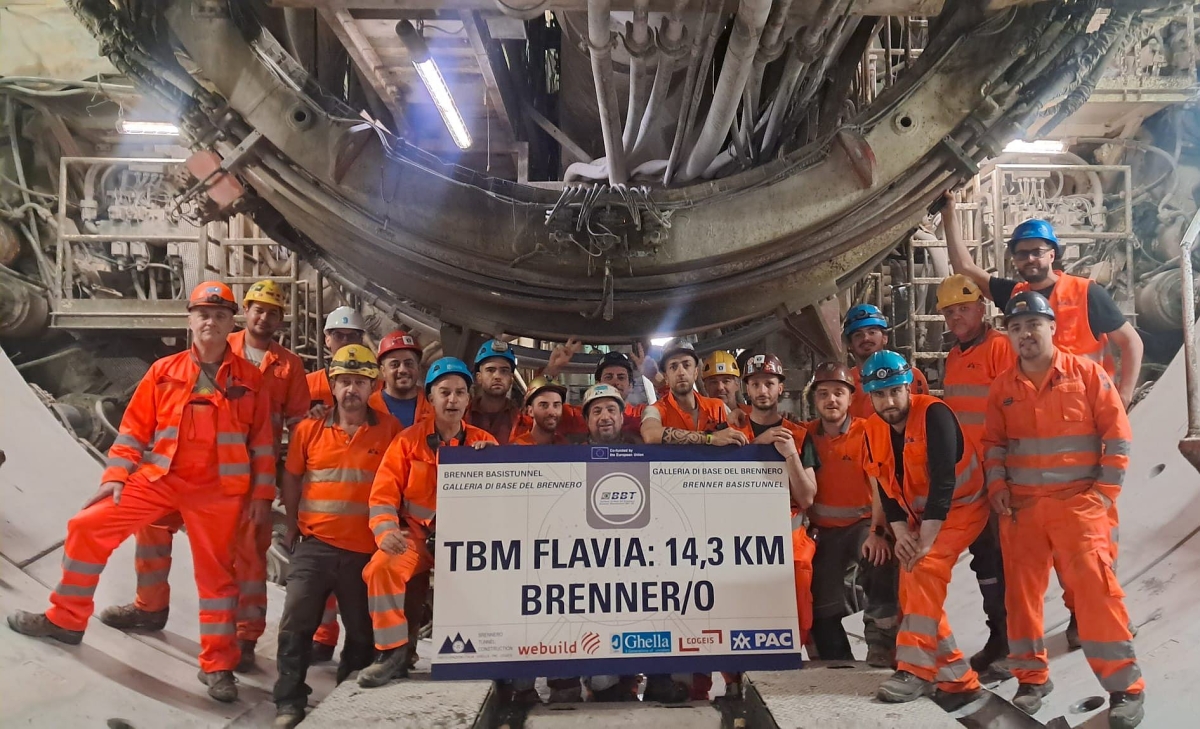 Completion of the western main tunnel on the Italian side of the Brenner Base Tunnel
Completion of the western main tunnel on the Italian side of the Brenner Base Tunnel
Credit/Quelle: BBT SE/Bianchi
Flavia, the last of three Herrenknecht machines, arrived at the national border at the Brenner Pass at a depth of around 1400 m and completed the drive in the western main tunnel for the H61 Mauls construction lot. Using two Double Shield TBMs with a diameter of 10.65 m, the miners of the joint venture between the companies Webuild, Ghella, P.A.C. and Cogeis excavated 14.3 km of the two main tubes. They mastered both high-strength rock and challenging geological fault zones. They used another Double Shield TBM with a diameter of 6.8 m to construct a service and rescue tunnel beneath the main tubes.
All participants celebrated this completion together, which once again emphasized the importance of the infrastructure project for the future of cross-border European mobility. First and foremost the TBM tunnelling team, who had accompanied Flavia on her long journey through the heart of the Alps.
TBM Flavia Installed 65 000 Concrete Segments
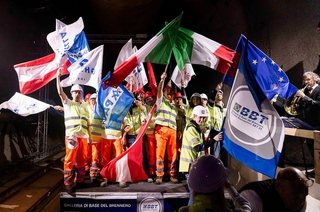 All participants celebrated the arrival of the TBM Flavia at the national border at the Brenner Pass together
All participants celebrated the arrival of the TBM Flavia at the national border at the Brenner Pass together
Credit/Quelle: BBT SE
TBM Flavia alone installed around 65 000 segments for the inner lining of the main tunnel. These precast concrete elements were manufactured using recycled tunnel excavation material. This allowed 30% of the excavated material to be recycled and the work to be carried out in line with the circular economy.
Two TBMs had already reached the state border before Flavia. Serena, the TBM that excavated most of the exploratory tunnel on the Italian side of the project, reached the Brenner Pass in November 2021. Virginia, Flavia's “twin”, arrived at the Brenner Pass in March 2023. Together, the three machines moving towards the Brenner Pass have excavated nearly 43 km of tunnel.
Only a few more metres of drilling and blasting need to be carried out in the Italian section of the BBT. In total, 85% of the entire BBT tunnel system has already been completed.

